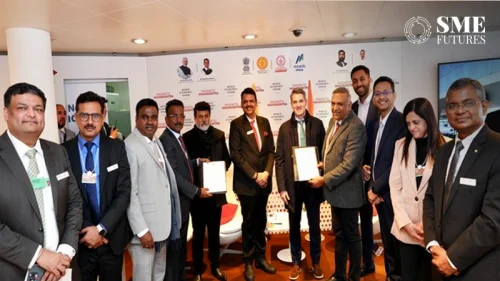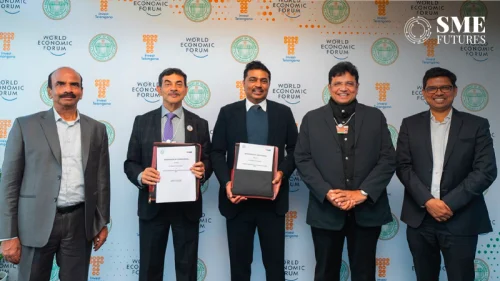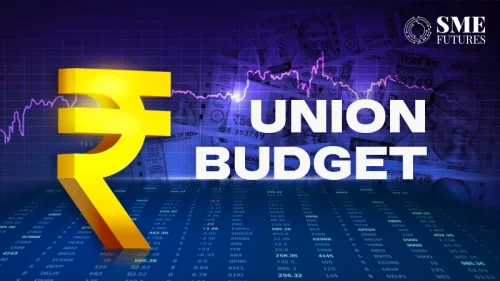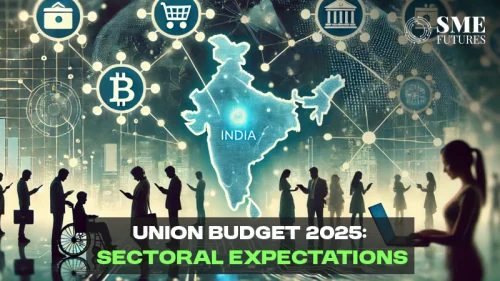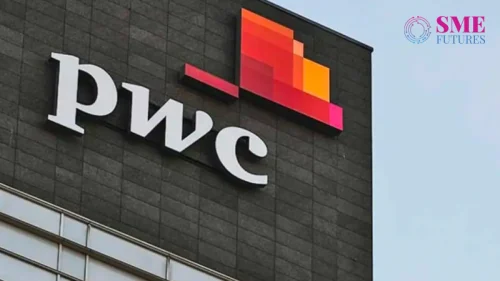It was Dil Chahta hai that created the hype for travel and tourism in India especially among the youth; it was the perfect combination of travel, friendship, and exploring the unseen. Over the years the same philosophy has evolved in a major business sector, as India offers a rich cultural and historical heritage, variety in ecology, terrains and places of natural beauty spread across the country. With growing opportunities in the sector, tourism contributed 9.4 per cent to India’s GDP in 2018. It is anticipated that GDP is expected to increase from ₹ 15.24 trillion (US$ 234.03 billion) in 2017 to ₹ 32.05 trillion (US$ 492.21 billion) in 2028. From April 2000 through December 2018, the hotel and tourism sector attracted around US$ 12 billion of foreign direct investment (FDI), according to the data released by the Department for Promotion of Industry and Internal Trade (DPIIT).

The sector in India accounted for 8 per cent of the total employment opportunities generated in the country in 2017, providing employment to around 41.6 million people during the same year. The number is expected to rise by two per cent per annum to 52.3 million jobs by 2028.
Moreover, India ranked seventh among 184 countries in terms of travel and tourism’s total contribution to GDP in 2017, making the sector the third-largest Foreign Exchange Earner (FEE) for India. During 2018, FEEs from tourism increased 4.70 per cent year-on-year to US$ 28.59 billion. Foreign Tourist Arrivals (FTAs) increased 5.20 per cent year-on-year to 10.56 million in the same period. Foreign tourist arrivals for medical purposes increased from 427,014 in 2016 to 495,056 in 2017 (P). During 2018, arrivals through e-tourist visa increased 39.60 per cent year-on-year to 2.37 million. In January 2019, arrivals through e-tourist visa increased by 21.10 per cent year-on-year to 0.29 million.
In India, Tamil Nadu became popular among the tourists as the registered highest footfall was 345 million driven by religious sites, followed by Uttar Pradesh at 234 million. Karnataka also recorded a footfall of about 180 million. The state of Sikkim recorded 84 per cent rise in tourist visits, though the base of existing travellers was comparatively smaller.
With immense opportunities in the sector, the hospitality sector, too, is looking at tapping the potential by increasing its presence in the country, both domestic and international. As per the data claims, international hotel chains will account for around 47 per cent share in the tourism and hospitality sector of India by 2020, and it will further grow to 50 per cent by 2022.

India on a digital tour
Today, India is the most digitally advanced traveller nation in terms of digital tools being used for planning, booking and experiencing a journey. India’s rising middle class and increasing disposable incomes have continued to support the growth of domestic and outbound tourism. Consumers’ travelling and expense pattern has also drastically changed with newer technologies.
Experts believe, Indians today are the most influenced by social media sites and online channels when they plan holidays. A report titled ‘How Does India Travel’ by Bain and Company and Google India confirms the trend. The report says, people are spending at least 11 per cent of their disposable income on travel. It also suggests the pattern that people tend to look at include factors such as interest and experience of the places and tourist spots. Thus, digital platforms play a pivotal role with more than 86 per cent of consumers being influenced by online channels.
In fact, online video streaming, too, plays a significant role here, with 21 per cent travellers being influenced. In the booking and sharing phase, nearly 60 per cent customers book transport and lodging online, and more than 50 per cent share feedback online, with social media being the dominant platform.
The report further reveals that, in 2018, around 51 per cent spending was done on air travel, 21 per cent on rail and bus each, six per cent on rental cab services and one per cent on cruise. This data also shows that US$ 94 billion was spent on 1.8 billion domestic and international trips.
The same report indicates that travel spending by Indians is expected to grow by 13 per cent to US$ 136 billion by 2021. According to data, Indian travelers will spend an extra US$ 24 billion on online travel bookings over the next three years, a growth of 35 per cent in 2021. Speaking about this, Vikram Ahuja, Founder of Byond Travel, opines that the trend is being fuelled by access to Internet and smartphones, better infrastructure and capital infusion by investors. He says, “People are travelling based on what they read on social media. Travel discovery and planning is happening online. Companies must reach out through all these avenues.”

Online travelers spend their disposable income mainly on lodging and consumption, which includes spends on shopping, recreation and food. With respect to their spending pattern, the report cites a 12 per cent growth in transportation (US$ 50 billion), 13 per cent growth in lodging (US$ 21 billion) and consumption. Out of the spending, people spend 48 per cent on shopping, 32 per cent on food and 20 per cent on recreation.
Furthermore, experts divide travellers on a number of factors, both online and offline. First is the experience-oriented traveller. Around 70 per cent of their bookings were done online and cumulatively spent US$ 22 billion in 2018. They extensively research both online and offline for authentic experiences and convenience of options, display high loyalty towards preferred brand of airlines or hotels and actively share experiences.
Then there is the budget group traveller. In 2018, 90 per cent researched online, while 55 per cent booked online, cumulatively spending US$ 29 billion. They make multiple decision-makers in the process and take the final decisions based on minimal cost.
Next is the occasional travel visiting friends/relatives. Ninety-two per cent researched online but only 60 per cent booked online, spending US$ 6 billion in 2018. They maximise family convenience within a budget, and believe online terms and conditions are restrictive.

Seeing these trends about how travellers are using online channels, Vikas Agnihotri, country director, sales, Google India, says, “New users perceive that online channels are geared more towards frequent flyers and experience-oriented travellers; existing travellers research online but the lack of trust in payments and booking experience make them end up booking offline.”
He adds that if travel players tap these online users through personalised marketing, messaging and travel plans, they can further augment online travel bookings. “This can be done by adopting digital technologies to influence customers early in the journey and moving from one-time engagement to ongoing relationships to have a positive impact,” Agnihotri emphasises.

Meanwhile, by 2021, air travel is expected to slow down as airports expect to be close to full capacity. Also, heavy rail investment is likely in the country.
MICE on the rise
India beckons not only the leisure traveller, but the business traveller as well. With non-stop flights from several US, European and other regions, travel to India has never been easier, resulting in a business tourism boom. In fact, the number of outbound travellers is also increasing every year. In 2017, the outbound (FTAs) stood at 23.94 million. Companies are increasingly choosing India for business meetings, and international organisations are selecting cities for convention sites, from cosmopolitan Mumbai on the coast to New Delhi, India’s capital city.
The tourism industry generally defines business tourism, as trips that bring together groups for four purposes: meetings, incentives, conventions and exhibitions – commonly known as MICE. It also includes individual business travel. Business travel revenues include expenditures for accommodation, meals, transportation and entertainment.

The MICE sector in India has been evolving at a rapid pace. Here, the new age of travel, India’s corporates are displaying an increasing appetite for unique travel experiences to woo their top performers and are not hesitant to spend on the same. The clear shift from the traditional basic sight-seeing tour plus gala dinner to innovative and immersive experiential itineraries has created a significant potential for the MICE sector.
Key source markets in India for experiential MICE travel include Mumbai, Delhi-NCR, Chennai, Bengaluru and Hyderabad; also, mini-metros and Tier 2 cities like Pune, Ahmedabad and Indore. Spends per MICE traveller have reached up to ₹ 500,000 per person for a six-to-seven-nights trip.
Thomas Cook (India) Ltd., an integrated travel and travel related financial services company, has witnessed a significant increase in demand for experiential travel from the MICE sector and, to capitalise on this opportunity, has launched a portfolio of unique programmes that deliver exceptional and engaging experiences across key global destinations.
Its internal data, too, has reiterated this growth potential, having witnessed demand of over 20 per cent for experiential MICE travel in the last three years. Hence, in a strategic initiative to leverage this momentum, the company’s MICE business has curated a series of cutting-edge MICE programmes. Rajeev Kale, President and Country Head – Holidays, MICE, Visa & Passport Services, Thomas Cook (India) Ltd., says, “The evolution in the MICE sector is creating an expanded market of discerning corporates. With experiential travel high on their wish-list, our launch of engaging MICE experiences was intended to capitalise and build on this significant and growing opportunity.”

The road ahead
India is a large market for travel and tourism, and offers a diverse portfolio of niche tourism products, namely, cruises, adventure, medical, wellness, sports, MICE, eco-tourism, film, rural and religious tourism. The sector is potentially a large employment generator besides being a significant source of foreign exchange for the country. During 2018, FEEs from tourism increased 4.70 per cent year-on-year to US$ 28.59 billion. FEEs during January 2019 were US$ 2.55 billion.

Seeing the growth trends, for the past few years, the government has been extremely proactive in encouraging tourism in India. The launch of marketing initiatives such as ‘Incredible India!’ and ‘Athiti Devo Bhava’ have been in line with the government strategy to put forward Indian culture and heritage, which, in turn, has provided a focused impetus to growth. With this, the government, too, is seeing huge possibilities in medical tourism and, hence, has released a new category of visa, called the medical visa, or M Visa.
The government further aims to achieve one per cent share in the world’s international tourist arrivals by 2020 and two per cent by 2025. To get stronger growth, travel and tourism players are also looking forward to the expansion of the E-visa scheme, which is expected to double the tourist inflow to India.



